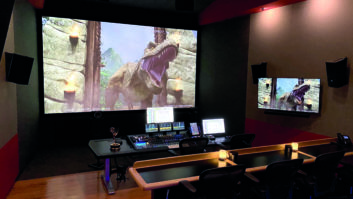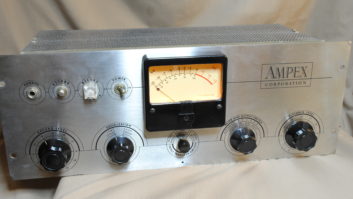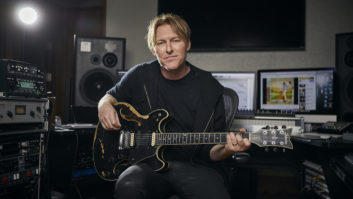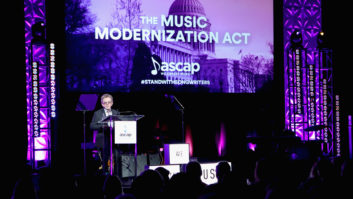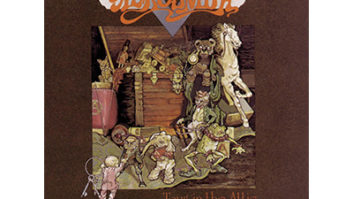The Fast and the Furious feels like an instant classic: think Blade Runner meets Rebel Without a Cause. While not exactly a chick flick, this sexy and stylish actioner has something for everyone, including a very hip soundtrack. Described as a “fierce and frenzied look at rival Los Angeles drag racing teams,” the Universal Pictures film explores the youthful subculture built around the visceral excitement generated by imported, and highly modified, nitrous-powered race cars.
Directed by Rob Cohen (Dragon: The Bruce Lee Story, The Skulls, Dragonheart) and produced by Neal H. Moritz (Cruel Intentions), The Fast and the Furious was mixed at Wilshire Stages Stage A by a crack sound team that included Soundstorm’s Bruce Stambler as supervising sound editor, Mike Casper as lead dialog and music mixer and Dan Leahy on effects.
Stambler was an inspired choice to take the sound design helm for Fast and Furious. An auto aficionado with an in-depth knowledge of race cars, he’s spent years perfecting the art of capturing their unique sounds.
“I have a passion for cars that go fast,” he admits. “But I wasn’t really aware of the import race cars. I hooked up with these kids in companies who were racing them and picked cars to record. Say, for example, a regular Honda Civic has 100 or so horsepower — the Honda Civic four-cylinder cars that we recorded have between 500 and 600 horsepower. That’s really high for a four-cylinder motor, so that, along with internal modifications, give it that special sound.”
Stambler’s recording setup included two Fostex PD2 DAT recorders inside each car along with, usually, Sennheiser 421 mics. “Most of these cars don’t have seats,” he laughs. “So we’d take a lawn chair and zip-tie it to the roll bars inside the car so one of my guys could sit in there.”
Mics were also taped to the car exteriors, one in the engine compartment and one by the exhaust. Then there were two other complete setups with Neumann RSM191 stereo mics and PD2s outside the cars.
Each take was crucial, as the crew could never be sure of what they’d get. “One of the problems with these types of vehicles,” Stambler notes, “is that they break. My whole crew would be out there at 6:30 in the morning and they’d fire up a car. They’d just rebuilt the motor, it would run for about eight minutes and that was it. The drivers are just kids, so they’re like, ‘Whatever.’ We’re really lucky that we got as much material as we did.
“It’s nasty stuff,” he laughs. “Nitrous is a horsepower adder; you gain anywhere from 100 to 300 horsepower just by pressing a button. You can hear it; it makes a very nasty, straining, engine sound. They put a tremendous amount of stress on the motors — that’s why they blow up.”
A true surround vehicle, Fast and Furious will be recognized for its car chases and inviting comparison to classics from the past. “You haven’t seen this kind of thing since Bullitt and The French Connection,” asserts lead mixer Mike Casper.
Another hipness quotient of Fast is its Matrix-style marriage of music and effects, where sometimes the listener can’t tell which is which.
“Sound is a big thing with [director] Rob [Cohen],” Casper continues. “The music composer was BT, a young artist in the same vein as Moby, who did really interesting things with the score. He even used a lot of car parts in the music.
“But Rob is the type of director who will drop music if he feels it will work. There are two sequences where we did that. One is the first drag race, and there’s another eight- or nine-minute big chase sequence with a semi truck and three cars. We pulled it off without any music at all, which is pretty unusual. Then again, there are a couple of sequences without sound effects where we just let the music do its thing, which is a nice change of pace, because this movie is so intense.”
Cohen came to rely upon Stage A’s acoustics in translating the mix from dub to theatrical release.
“We did the temp dub here, and I found this room to be amazing,” he states. “It compresses the sound into a very intense package that you have to carve. Then, when you take it to a theatrical speaker system, it works gloriously because it spreads. It not only translates, it actually gains transparency and air.
“The sound element of the picture is critical to me,” Cohen continues, “and so much depends on how you mix it. It can be mixed in a way that is thrilling and specific and multi-layered and dimensional, or you can get a hodgepodge of noise that will actually be painful. Especially when you’re trying to go to the outer edge of something that hasn’t been done before.
“We ended up with a beautiful dub, one that I actually think will affect how other films are done. When we started, almost nobody believed that you could make a dub this in-your-face. But we were always aware of the pain threshold. So when something cuts at a place or puts pressure on the ear, we were clear to counterbalance it very quickly. A high screech would be balanced by a subwoofer sound — all sorts of things like that. Because, in the end, it isn’t about the loud, it’s about the art of loud.”
